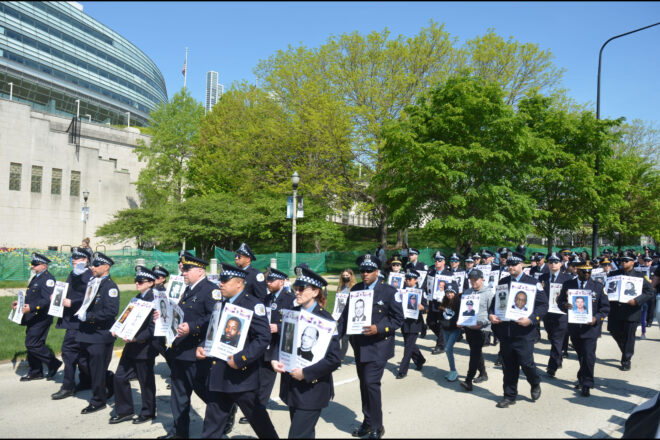When it comes to crime, most Americans traditionally looked to the criminal justice system to impose consequences. But, here is a key truth. When the system does not do so, consequences still occur. That which is not addressed in the courthouse, often plays out in the streets. A second truth: Last year, America’s urban areas became more vulnerable to unaddressed lawlessness. In that wake, deadly violence dramatically increased, a truly stark consequence. The 2020 increase in America’s national murder rate was about 30 percent. That is indeed a deadly truth and consequences lesson. In our society, truth and consequences can be deliberately obfuscated concepts. Too often we are told to ignore the truth. Relative to the fragility of public safety, 2020 provided a harsh reality check.
Estimated reading time: 8 minutes
FBI – Crime in the United States
Each year the Federal Bureau of Investigations (FBI) is tasked with gathering crime, victimization, and justice system data from across the country. The data is collected as part of the Uniform Crime Reporting program. Among the most watched statistics is the nation’s annual murder rate. The rate is calculated and reported as the number of murders in the nation per 100,000 people. Such allows for general comparisons between years and locations, as populations vary across both time and location.
This process is a substantial undertaking. As a result the final data for any one year comes out in September of the following year. The FBI is scheduled to formally announce their final 2020 summaries on 27 September, this coming Monday. However, on 23 September 2021, key data elements became available early.
For those political leaders who sought to minimize last year’s lawlessness, its “truth and consequence” reporting time. The percentage increase in the nation’s murder rate from 2019 to 2020 was historic. The 2020 increase was the largest single year increase ever recorded – and it wasn’t close. Additionally, the dramatic rise followed after a three-year period in which key reductions had been observed. Such punctuated a key point. Relative to public safety, the wheels came off last year. Worse, this year’s murder rate will be up again. While the percentage increase will be less than in 2020, we continue to head in a more deadly direction.
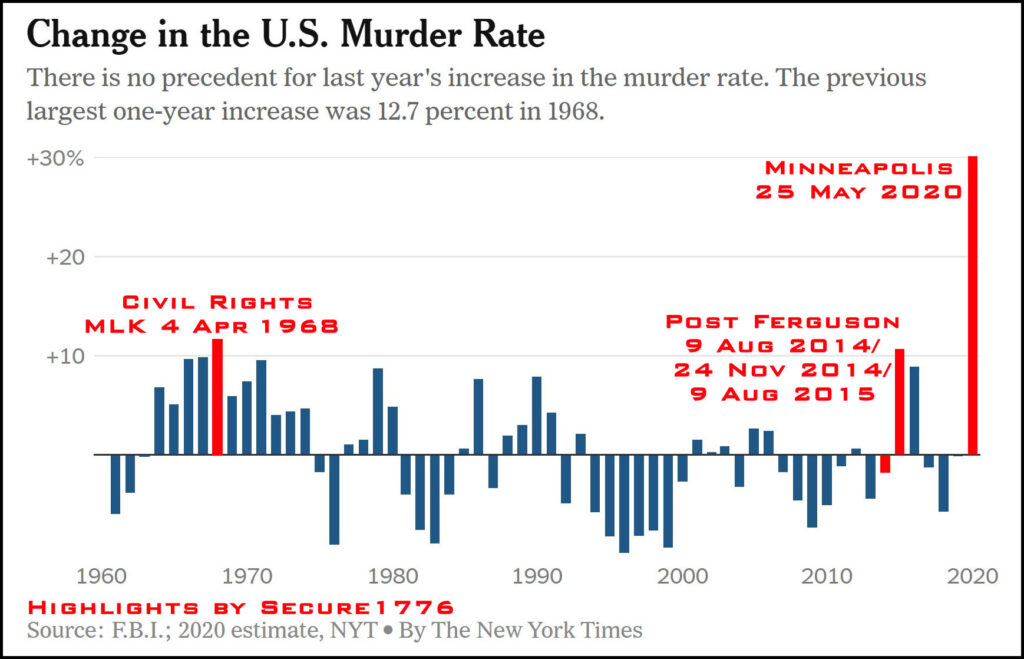
More Historical Perspective
The increase last year is more than twice the level of increase in 1968, the year with the next highest percentage change. 1968 was at the height of national tensions over the Vietnam War, clashes that accompanied the civil rights movement, and the assassination of Reverend Martin Luther King, Jr. The percentage increase in 1968 from 1967 was 12.7%.
The third highest single-year percentage increase occurred in 2015. That increase was 10.8%. The aftermath from the August 2014 police-involved incident in Ferguson, Missouri drove up violence. Nationally, the increase in violence began at the end of 2014, after two rounds of protests and riots in Ferguson and several other cities. As shown above in the murder rate trends data, the subsequent violence continued at significantly elevated levels through 2016.
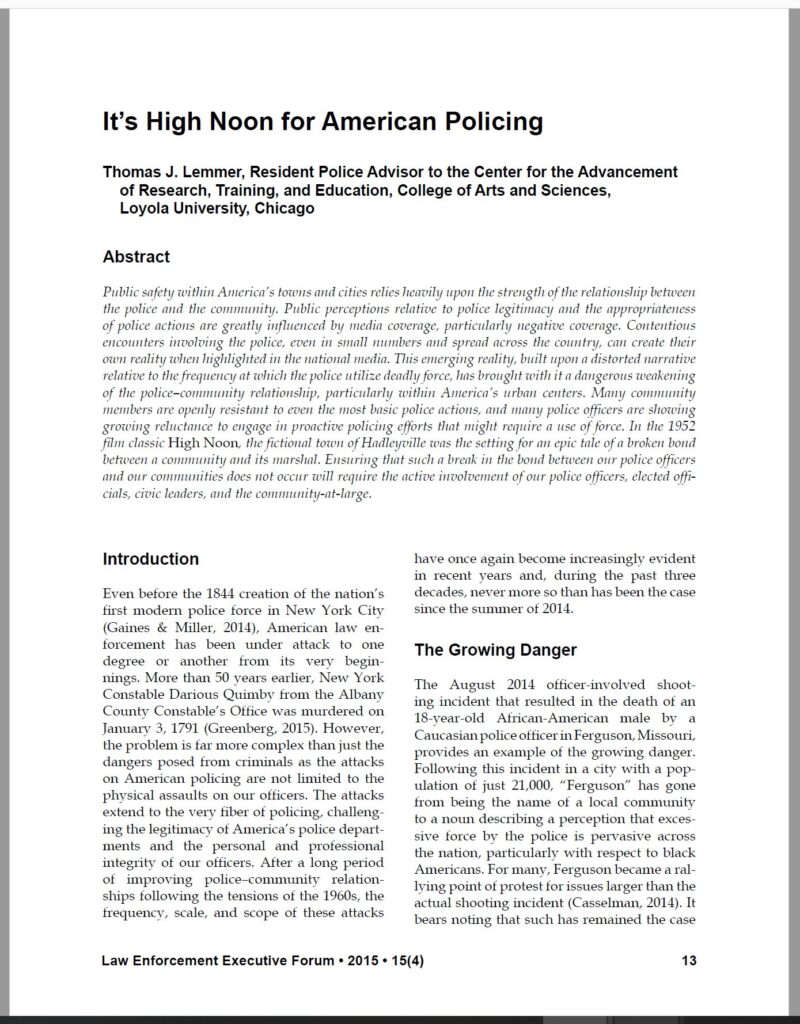
The anti-police protests extended in three waves over the next year. The first occurred in the days immediately following the death of Michael Brown. The second round following the announcement by the Missouri prosecutor declaring that the officer’s use of force in that incident was lawful. It bears noting that the U.S. Department of Justice, during the Obama Administration, also found no violations of law by the involved officer. A third round of violence occurred on the first anniversary of the encounter. This incident and the immediate aftermath are discussed in the article, “It’s High Noon for American Policing,” by Thomas Lemmer. It remains a recommended reading.
Given the multi-year violence consequences post-Ferguson, and the more intense violence post-Minneapolis, another truth emerges. Violence levels in 2022 will most likely continue to be substantially higher than were observed in 2019. This likelihood increases with each effort that further diminishes the consequences that should emanate from the nation’s courtrooms.
Truth and Consequences Lessons
Above we were analyzing the percentage change in the national murder rate. It is important to note that the following key points relative to the rate itself. First, the final 2020 murder rate estimate from the FBI was 6.5 per 100k. Such is the first time in the new millennium that the annual rate has been above 6.0 per 100k. Second, by comparison, in 1980 (with the violence fueled by the crack epidemic) the annual rate was 10.2. In 1991, the rate spiked again to 9.8. So by comparison, thus far we remain lower than those all-time highs. However, we continue to trend in that direction, not away from it. [This paragraph updated following final data release.]
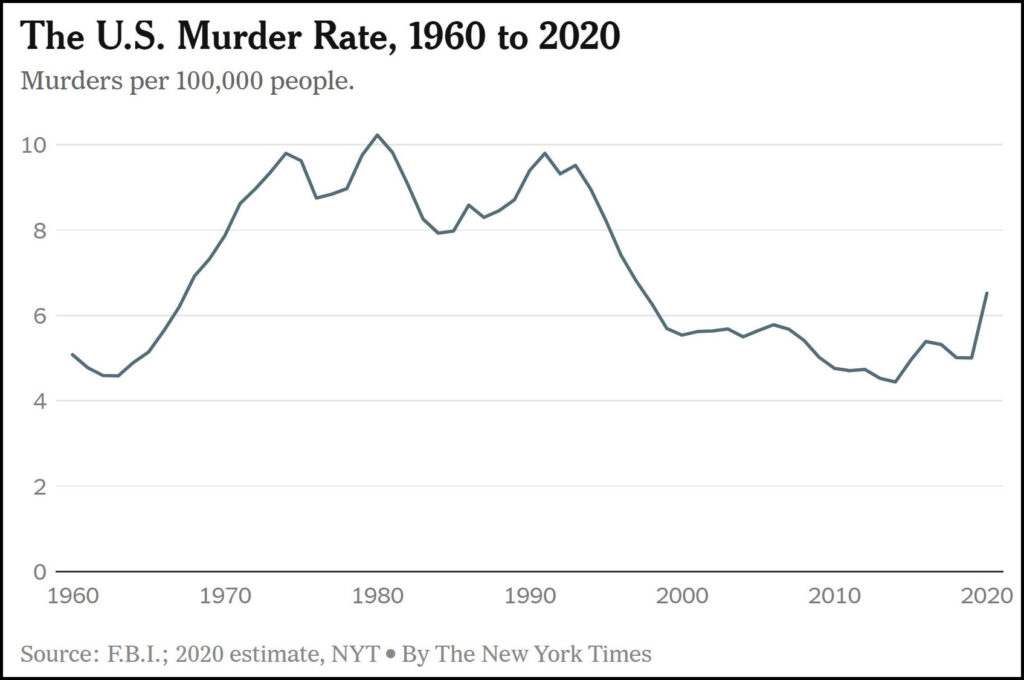
With the advent of the community policing era in the mid 1990’s, as well as other policing initiatives committed to reducing disorder, the murder rate declined significantly for the rest of that decade. Year 2000 saw a rate of 5.5 per 100k, which was 46% lower than the rate in 1980. Further reductions continued in the years that followed. In 2014, the rate dropped to just 4.5 per 100k, the lowest annual rate since the 4.0 per 100k in 1957. The nation had been trending in the right direction. Well, that is until Ferguson, and the truth of the 2015-2016 surge in violence. Severe violence is a consequence that follows whenever divisions separate the police and the community. This is a truth that must be remembered.
The wave of anti-police rhetoric following the Ferguson incident served as the foundation for the well-coordinated anti-police movement observed in 2020. Activists, anarchists, radicals, and political operatives remained mobilized post Ferguson. They were among those actively seeking to weaken the larger police-community relationship. Such was the case even as police regained traction in addressing violence in the period from 2017 thru 2019.
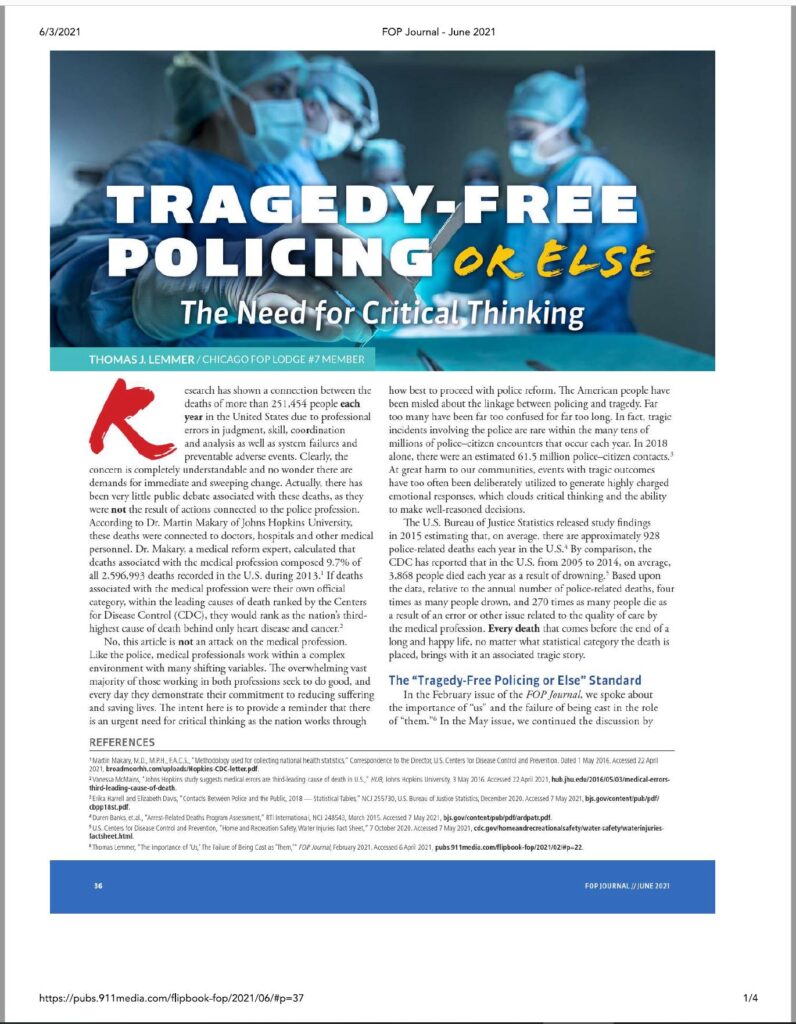
In an analysis of the Antifa movement and its Marxist ideology, Soeren Kern identified law enforcement as a specific target of the group’s activities. He reported on a common Antifa tactic: “employ extreme violence and destruction of public and private property to goad the police into a reaction, which then ‘proves’ Antifa’s claim that the government is ‘fascist.’” All of this was immediately under the surface when a store owner called the police in May 2020 about George Floyd. Kern further noted: “Antifa radicals increasingly are using incendiary events such as the death of George Floyd in Minnesota as springboards to achieve their broader aims.”
A Lesson on the Police-Community Relationship
Expectations surrounding police legitimacy are consistent with the law enforcement code of ethics. On this point, we encourage our readers to view our video “The Oath.” However, between the Ferguson and Minneapolis incidents, political activists were often successful in re-framing the national discussion on policing. The most radical of these critics have sought to establish deliberately unattainable expectations from which to hold the police. Lemmer has described this as a “tragedy-free policing, or else” standard. We highly recommend reading the article, “Tragedy-Free Policing or Else: The Need for Critical Thinking.” This deception continues to jeopardize public safety.
If you have not yet read our post “Assisted Suicide in Minnesota,” we encourage you to do so. The community must push back against efforts that weaken the police-community relationship. They must also push back against those efforts that diminish the ability of the police to address violent crime.
The question the community must begin to ask in earnest is: “Who benefits from lawlessness?”
Final Truth and Consequences Point
The community is right to expect both constitutional policing that is respectful of civil liberties and public safety. Secure 1776 continues to advance these principles as a foundation for improved public safety. Efforts that facilitate lawlessness and violence must be vocally rejected. As a community, we need our elected officials and civic leaders to foster unifying approaches that advance constitutional policing, reduce violence, address chronic crime conditions, improve public safety, protect victims, foster wellness, and enhance community support for the police. If this does not occur, America is headed back to 1990’s levels of violence.
We are interested in your thoughts, and invite you to comment below.

Copyright Protected | (c) 2021 Secure1776.us – All rights reserved.

